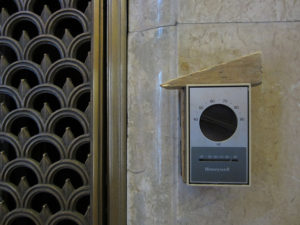 Growing up in the Caribbean I was used to only two types of weather patterns: rainy season and dry season. Where I grew up the average annual temperature was 80 degrees. In the Caribbean, we only paid attention to the thermometer, which served to tell us the temperature at any given time.
Growing up in the Caribbean I was used to only two types of weather patterns: rainy season and dry season. Where I grew up the average annual temperature was 80 degrees. In the Caribbean, we only paid attention to the thermometer, which served to tell us the temperature at any given time.
I don’t think I even heard about or knew what a thermostat was until I came to the Unite States in the mid-1980s. For most people in the Caribbean, we only need to know what the temperature is so we can dress appropriately. We had no use for a thermostat because few of us had air-conditioning–and certainly no heating–in our homes.



